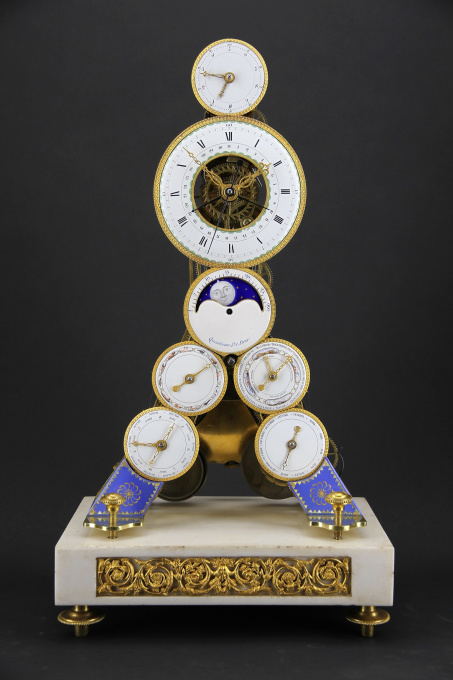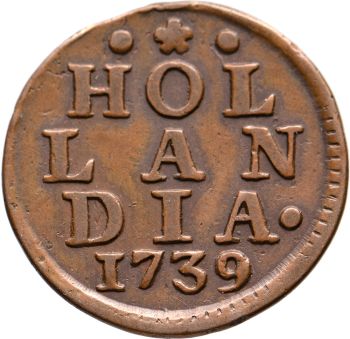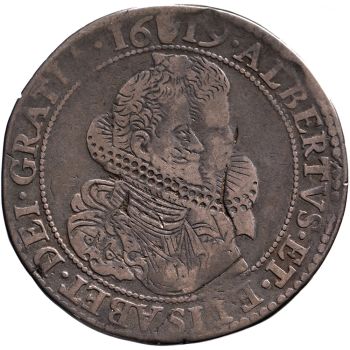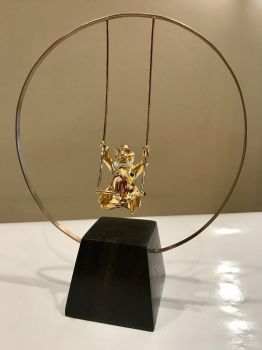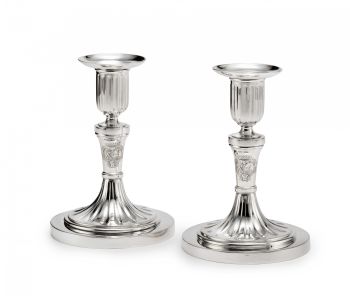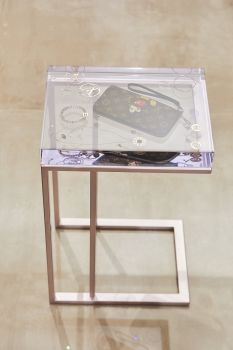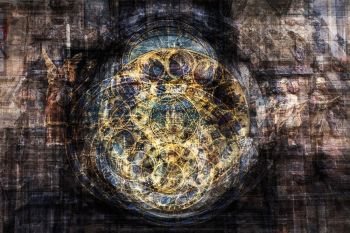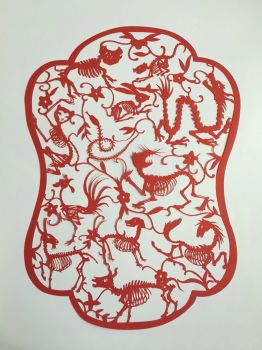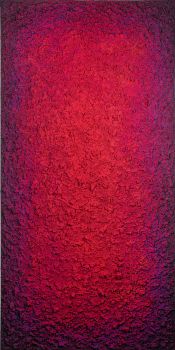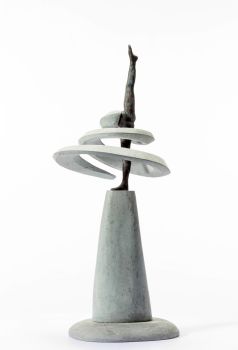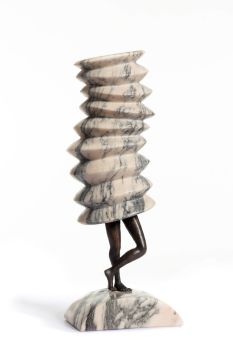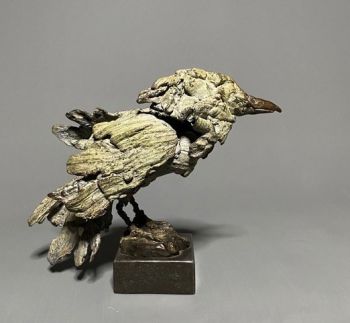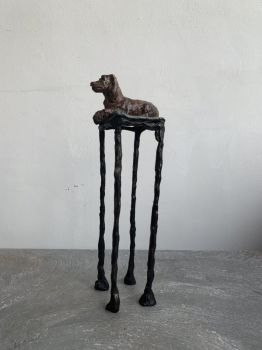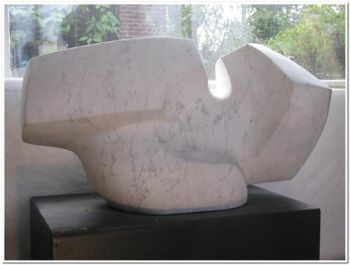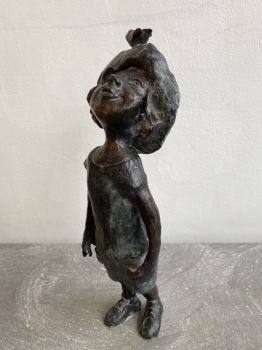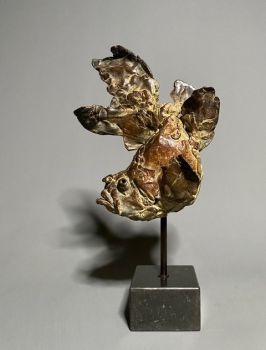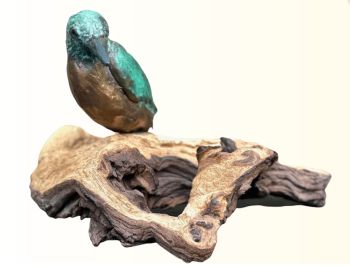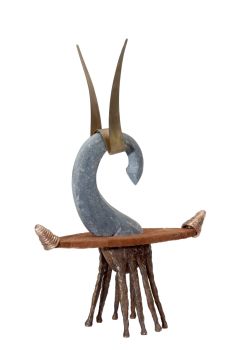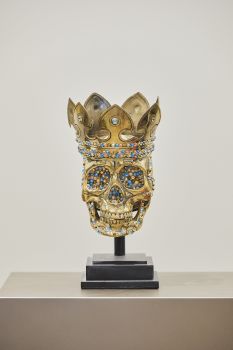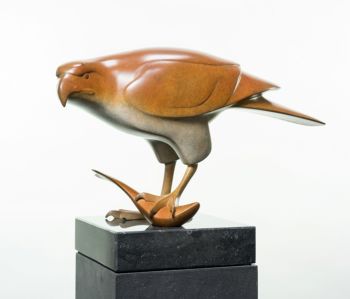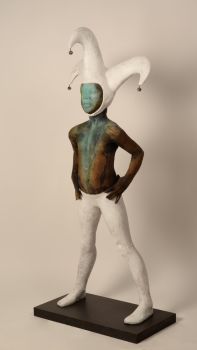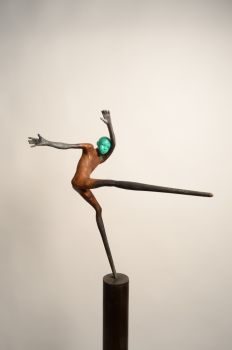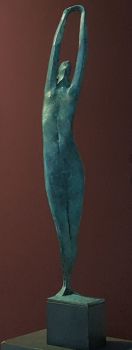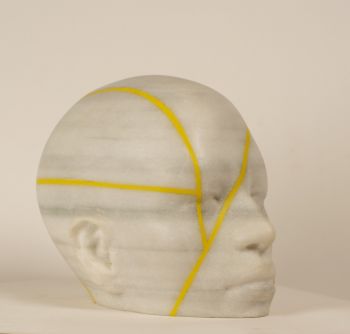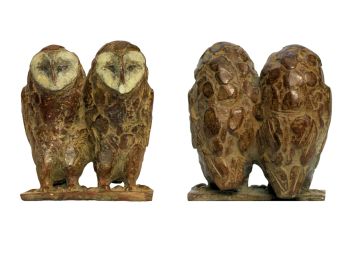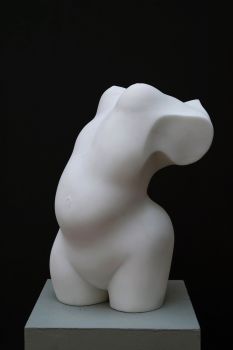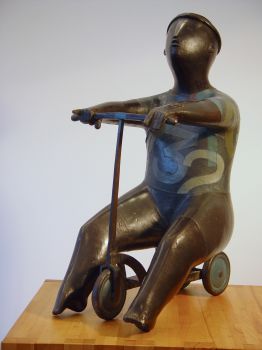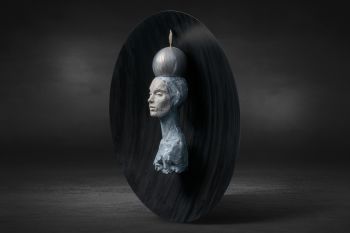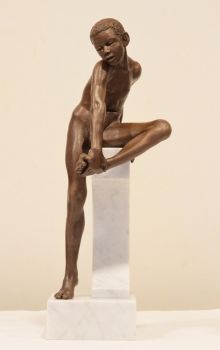Relógio de esqueleto revolucionário francês com display de hora dupla 1793
Artista Desconhecido
MármorePedraBronzeOuroMetalmarmore brancoEsmalteDourado
49 ⨯ 27 ⨯ 17 cm
Atualmente indisponível via Gallerease
- Sobre arteA skeleton clock (pendule squelette) with 7 dials and 15 indications, signed: “Baudin”. The upper dial indicates the hour of the day in decimal time (10 hours per natural day). The large dial indicates duodecimal (conventional) time and two extra hands that respectively indicate the date in the Gregorian and the Republican calender. The lower central dial shows the phases of the moon calendar (Quantième De Lune) and the days in the moon calendar (29.5 days)
Beneath the three central dials, there are four more dials that respectively indicate:
Upper left: Zodiac with the respective constellations
Lower left: the outer ring indicates the day of the Republican décade, the inner ring indicates the day of the Gregorian week and its corresponding planet.
Upper right: the months and seasons of the Republican calender
Lower right: the months of the Gregorian calender.
The clockwork has a going train with pin wheel escapement and central seconds indication. The half-second grid pendulum has spring suspension. To level the mechanism there are set screws in each of the four legs.
The striking train for the quarter hours is located in the left leg and strikes on two bells (b1 & b2) In the right leg there is a striking train for the hours (b3).
The quarter hour striking train strikes once at 15 minutes (b1), twice at 30 minutes (b1-b2) and three times at 45 minutes (b1-b2-b1). At the hour it strikes 4 times (b1-b2-b1-b2) and subsequently the hour at b3
The left striking train drives the hands of the two lower left dials, the right striking train drives the hands of the right dials. The left winding mechanism is wound clockwise, the right mechanism is wound counter clockwise. The windlasses of the respective springs are hidden behind the blue enamelled cover plates. The date and moondate are driven by the going train.
The Revolutionary calender
The calender had 12 months of equally 30 days. The months were divided into three periods or décades of ten days. Every year starts on the autumnal equinox (when the sun is exactly of the equator). The days left to make a full year after the twelve months, were called jours supplémentaires or sanculotides. These were the day of virtue, the day of genius, the day of labour, the day of opinion, and the day of recompense. In leap years (les années sextiles) the day of the revolution was added to this range. The period of four years that ended with the day of the revolution was called a Franciade.
The poet Fabré d’Églantine was commissioned to devise new names for the months and days. months of the fall; vendémiaire, brûmaire, frimaire; months of winter; nivôse, pluviôse, nivôse; months of spring; germinal, floreal, priairial; months of summer; messidor, thermidor, fructidor.
The days of the décades were called: primedi, duodi, tridi, quartidi, quintidi, sextidi, septidi, octidi, nonidi, and décadi. Every day of the year also got its own name to replace the Catholic saints days. It was decided that days were given names of fruits, vegetables, animals, tools etcetera. The quintidis should get the name of an animal, the décadis were to be given the name of agricultural implements. - Sobre artista
Pode acontecer que um artista ou criador seja desconhecido.
Algumas obras não devem ser determinadas por quem são feitas ou são feitas por (um grupo de) artesãos. Exemplos são estátuas dos tempos antigos, móveis, espelhos ou assinaturas que não são claras ou legíveis, mas também algumas obras não são assinadas.
Além disso, você pode encontrar a seguinte descrição:
•"Atribuído a …." Na opinião deles, provavelmente uma obra do artista, pelo menos em parte
• “Estúdio de…” ou “Oficina de” Em sua opinião um trabalho executado no estúdio ou oficina do artista, possivelmente sob sua supervisão
• "Círculo de ..." Na opinião deles, uma obra da época do artista mostrando sua influência, intimamente associada ao artista, mas não necessariamente seu aluno
•“Estilo de…” ou “Seguidor de…” Na opinião deles, um trabalho executado no estilo do artista, mas não necessariamente por um aluno; pode ser contemporâneo ou quase contemporâneo
• "Maneira de ..." Na opinião deles, uma obra no estilo do artista, mas de data posterior
•"Depois …." Na opinião deles uma cópia (de qualquer data) de uma obra do artista
• “Assinado…”, “Datado…” ou “Inscrito” Na opinião deles, a obra foi assinada/datada/inscrita pelo artista. A adição de um ponto de interrogação indica um elemento de dúvida
• "Com assinatura ….”, “Com data ….”, “Com inscrição ….” ou “Tem assinatura/data/inscrição” na opinião deles a assinatura/data/inscrição foi adicionada por outra pessoa que não o artista
Artwork details
Related artworks
- 1 - 4 / 12
- 1 - 4 / 7
 Com curadoria de
Com curadoria deDanny Bree
1 - 4 / 24- 1 - 4 / 7
- 1 - 4 / 24

